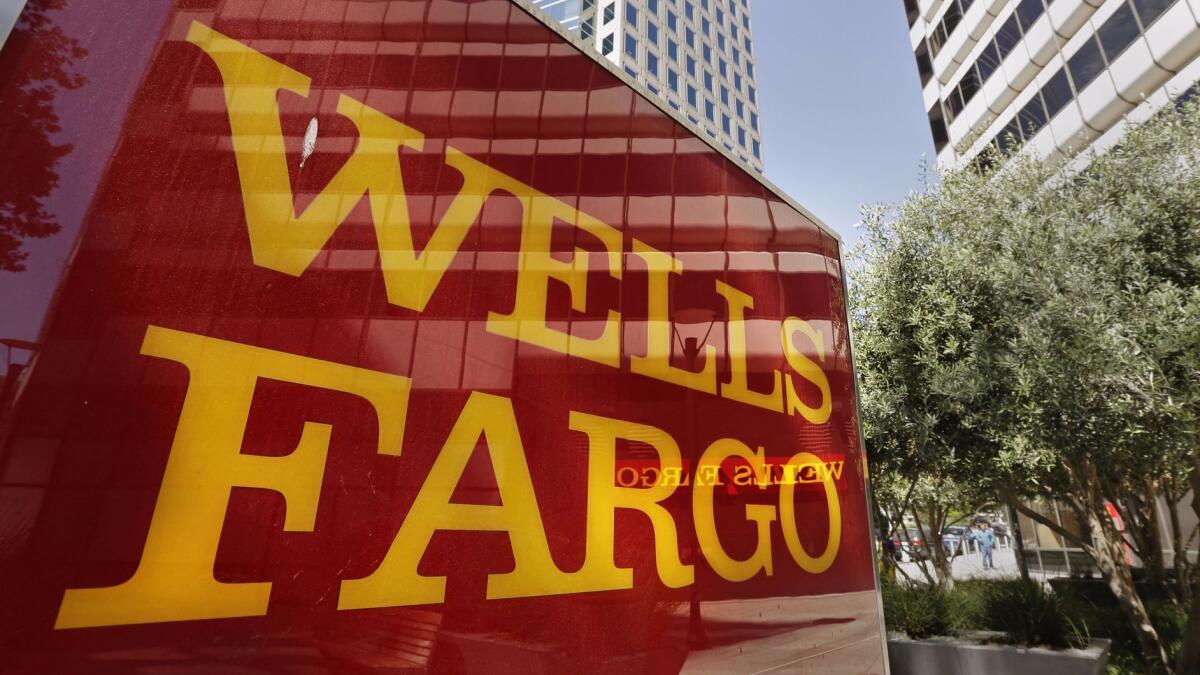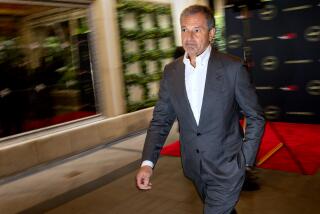As Wells Fargo seeks a new CEO, it loses $24 billion in market value

At Wells Fargo & Co.âs town hall meetings, executives have fielded countless questions from employees about efforts to resolve scandals that erupted almost three years ago.
One looming topic hasnât come up recently: Who will run the bank?
While the abrupt exit of Chief Executive Tim Sloan in March kicked off a succession hunt that has captivated the industry, an unexpected calm has taken hold inside Wells Fargo, according to people close to the firm. The rumor mill â once abuzz with talk of potential candidates â has quieted. Privately, some executives say the continuing search is giving them room to focus on their businesses and work through regulatorsâ remaining concerns.
Yet on Wall Street, the scene is the other kind of sanguine: The stock has slipped into the red for the year. Since its hunt for a leader began, the company has lost almost $24 billion in market value.
That performance puts Wells Fargo behind its largest U.S. competitors this year, signaling frustration in the market over the boardâs quiet search. The stock has lost 8% since Sloan stepped down in late March, while top rivals have stayed flat or posted gains. JPMorgan Chase & Co. is up 7% and Citigroup Inc. 2%. Bank of America Corp. is down 1%. The broader KBW Bank Index has slipped about 2%.
Much of Wells Fargoâs divergence occurred just after Sloan stepped down. The gap later widened, at least briefly, after the lender forecast a bigger drop in interest income than some major rivals as declining interest rates drag on the industry. The firm also faces a regulatory cap on assets imposed last year. Still, those challenges bring some analysts and big investors back to the CEO search: They say they canât advocate buying more shares until the San Francisco bank installs a leader with the authority to lay out a plan for the future.
âItâs really hard to own the stock if thereâs no long-term strategy being articulated,â said Brian Kleinhanzl at KBW. He downgraded the shares to âmarket performâ when Sloan announced his retirement.
A company spokeswoman declined to comment.
In March, chair Betsy Duke said the board would act with urgency to recruit an outsider. Still, âwe want to be thorough in our search and find the candidate that we think will best fit the objectives for Wells Fargo,â she said at the time.
âOpaque processâ
Since then, the board hasnât provided updates. In the meantime, a number of potential candidates turned down overtures from recruiters. On a conference call with analysts last month, interim CEO Allen Parker said he wasnât directly involved in the search and didnât know when it would end.
The CEO hunt âhas been made worse by having it be an opaque process being driven by the board with management unable to communicate to investors,â said Kleinhanzl, the KBW analyst. âThe fact that people donât want this job hurts the reputation of the bank.â
Altogether, only 31% of analysts covering the company recommend buying its stock, according to ratings tracked by Bloomberg. For JPMorgan, Bank of America and Citigroup, the percentage ranges from 49% to 90%.
Outside, a constellation of political issues is threatening to complicate the search. Sen. Elizabeth Warren (D-Mass.), one of Wells Fargoâs most vocal critics, is climbing in polls as she pursues the Democratic nomination for next yearâs U.S. presidential election. Last week, House Financial Services Committee Chairwoman Maxine Waters, a Democrat from Wells Fargoâs home state of California, issued a report slamming the lack of diversity atop the financial industry. She and others on the committee are turning up pressure on the nationâs largest banks to elevate a woman or member of a minority group to CEO.
Predicting cuts
One thing that does weigh on Wells Fargo employees is the uncertainty around what a new CEO might do next. An outside hire is widely expected to review the bankâs strategy, which long focused on selling as many products as possible through a network of branches. That has left Wells Fargo with the largest workforce among U.S. banks, with almost 263,000 people at the end of June. Yet their productivity has suffered since the scandals came to light.
âThereâs a tremendous opportunity to streamline,â said Kyle Sanders, an analyst at Edward Jones. âI expect a new leader to come in and likely say, âWeâre going to let a lot of people go and cut costs to support profitability.ââ
Expenses were top of mind for investors when Wells Fargo posted quarterly results last month. On a conference call, executives predicted costs would be ârelatively flatâ in 2020 compared with this year. Under Sloan, the bank had said next yearâs expenses would be lower.
Parker, formerly the bankâs general counsel, has publicly vowed not to âtread waterâ while in charge. His priorities include improving operations and customer service while tackling issues raised by regulators. Senior executives credit his knowledge of those woes with hastening reforms. Progress there may even give the board more time to find a longer-term replacement.
People familiar with the thinking at the bank say the last thing the board wants to do is make a quick decision it later regrets. Wells Fargo faces significant challenges â both in its business and in relationship with regulators â and the wrong pick could damage the company and erode returns for years.
Those people predict the panel will take the time it needs to find the right person, however long that is.
âThe board of directors wants the best of the best to clean up all the problems,â said Jeanne Branthover, a managing partner at executive-search firm DHR International who isnât involved in Wells Fargoâs CEO search. âThe best of the best most likely felt that this is too risky for their career and their reputation to take it. So then the question is going to be, who do you go to?â
Levitt writes for Bloomberg.
More to Read
Inside the business of entertainment
The Wide Shot brings you news, analysis and insights on everything from streaming wars to production â and what it all means for the future.
You may occasionally receive promotional content from the Los Angeles Times.










